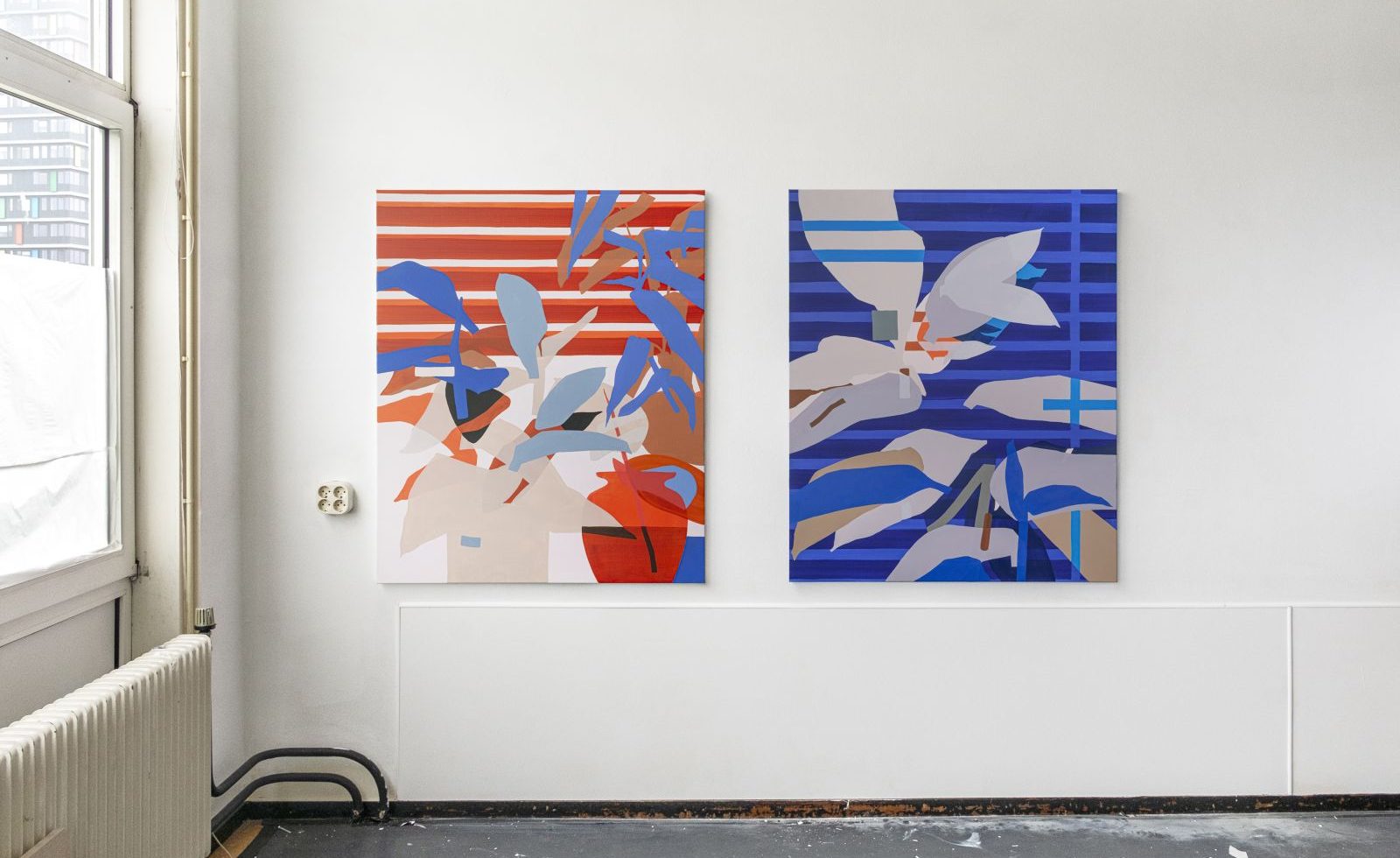
Liesbeth Piena wins Sieger White Award
Liesbeth Piena (Waalre, 1993) is the winner of the Sieger White Award (SWA). The award provides the winning artist with a € 25.000 publishing deal and a chance to exhibit their work in a solo exhibition. Mini Galerie is honoured to be the host of that exhibition in September 2021. We caught up with the young artist to talk about her background and emerging career as a visual artist.
We speak via Whatsapp video call, where Liesbeth gives me a tour of her studio. It’s a spacious room in a converted school building she’s used as her atelier since moving to Arnhem in March. Large windows fill the entirety of the back wall, partially blocked with white blinds. “to keep me from gazing outside and getting distracted”. A table full of houseplants stands in the centre of the room, and canvases of various sizes are propped up and displayed along the edges. She points the camera at a recent painting she made for her sister, a large canvas with a colour palette of soft pink and light grey.
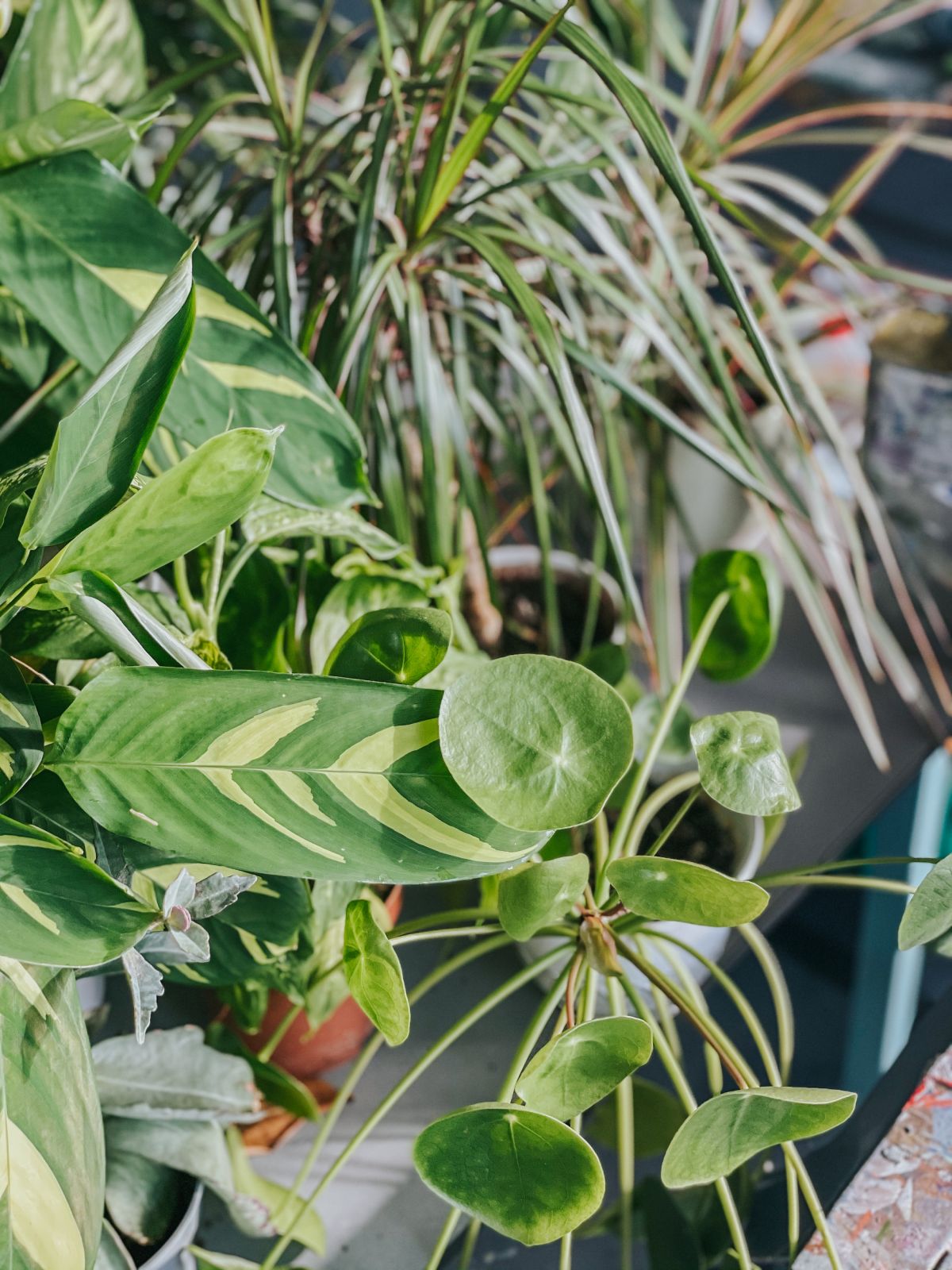
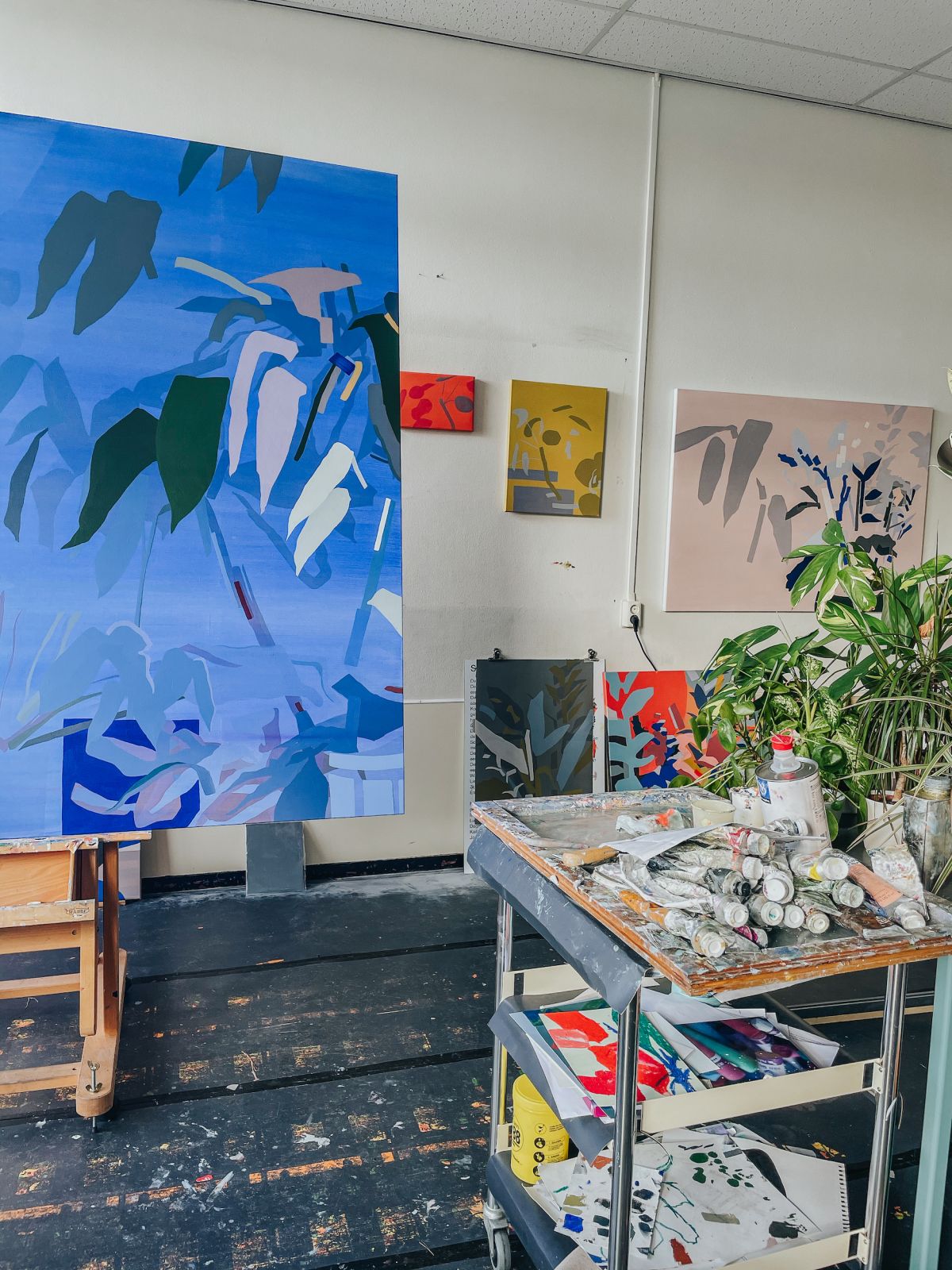
I congratulate her on winning the Sieger White Award, and ask whether she’s excited to start working on the book and exhibition.
“It’s a huge surprise to receive this award. I only graduated in 2018, so it’s a real honour to already have so much trust in my work. The award is wonderful in that it gives me the freedom to decide exactly what I want to put in my book and what it will look like. The book will provide an overview of my paintings and there will also be space for drawings, which ofter form the foundation of my paintings.
Sometimes it’s difficult to portray my paintings on paper, so it’s great that he book will have the space to include close-ups, drawings, and images of my paintings hanging up in a room, so that you also get a feel for their dimensions.
I’m looking forward to the opportunity of working with authors, a photographer and a graphic designer on the project. I am also excited about my September 2021 solo exhibition with Mini Galerie.”
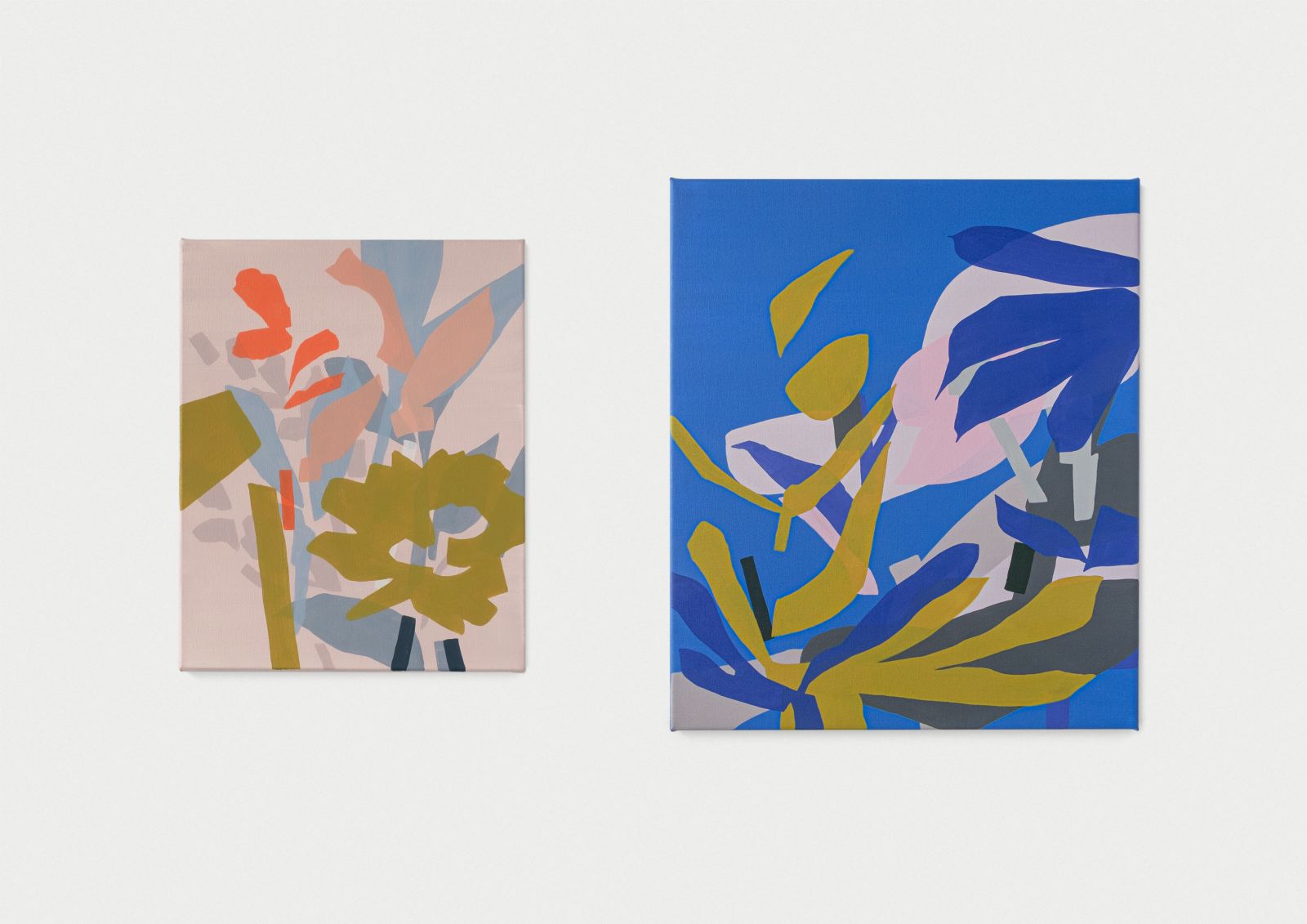
I ask her whether she has always wanted to be an artist. Liesbeth jokes that she used to have a Sims version of herself that painted and sold paintings instead of getting a “real” job in the Sims world. “When I was six I became obsessed with hospital TV series and I was fixated on the idea of becoming a cast maker… I wanted to do something practical, to work with my hands, and to spend as little time behind a desk as possible.”
Liesbeth’s paintings play with light and abstract form in a way that brings mundane, everyday objects new life. She captures a different way of looking at ordinary objects around us, be it the blinds on our window or the house plant on our coffee table.
“During my foundation year, and later during my (unfinished) graphic design, and fine art studies (BA 2018 at AKI ArtEz in Enschede), I realized what things interested me. The analytical study of an image, working with large shapes, creating colour combinations and working with contrast.. finding out what works in a picture and what doesn’t . I’m more interested in my subject’s form rather than any conceptual notion. The three principles that have always guided my art are shape, colour and material.”
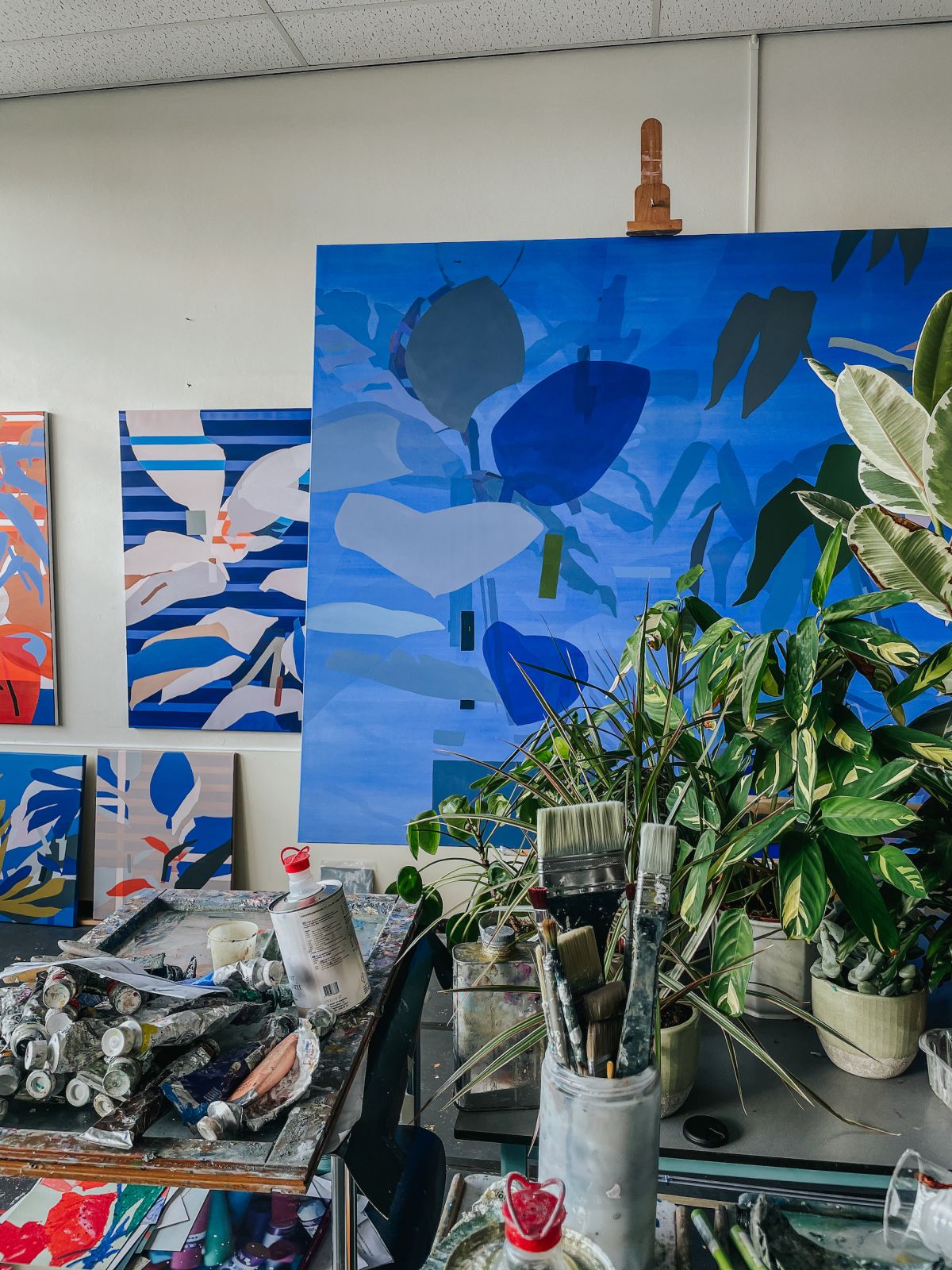
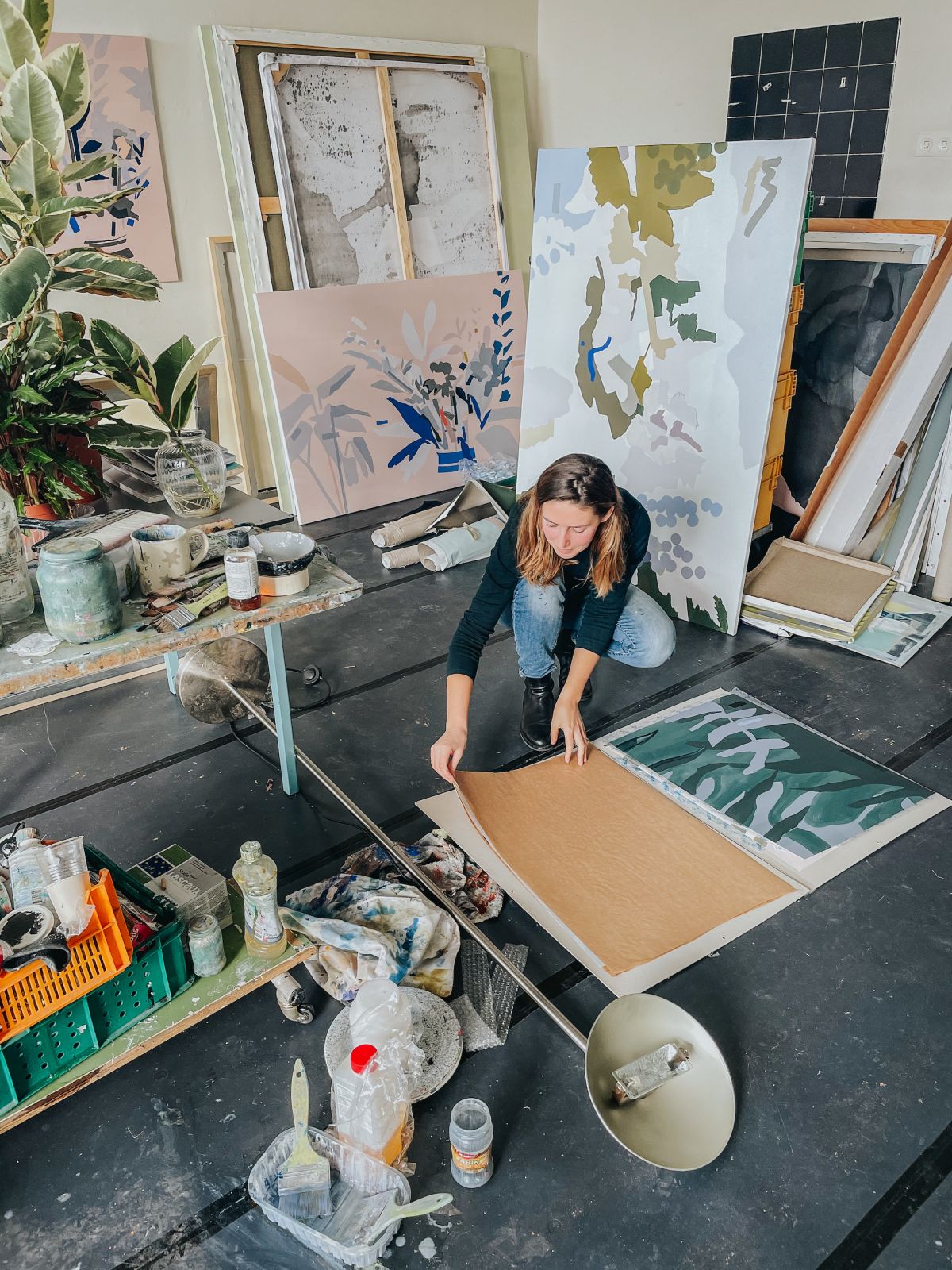
I ask her about her artistic method, whether she makes sketches of her paintings first, or just makes it up as she goes along. She shows me the collection of smaller wall paintings that she uses as a reference for what colour combinations work, and what don’t work together. “These aren’t paintings made to sell, some I actually find ugly, but they help me figure out what contrasts work best”. She walks to another table and shows me her sketchbooks, full of the outlines silhouettes of houseplants, layered and overlapping one another.
“I don’t know what the end result will be when I start a painting. The palet often changes during the process, and because I work in layers, I often surprise myself, and change occurs in reaction to that surprise.”
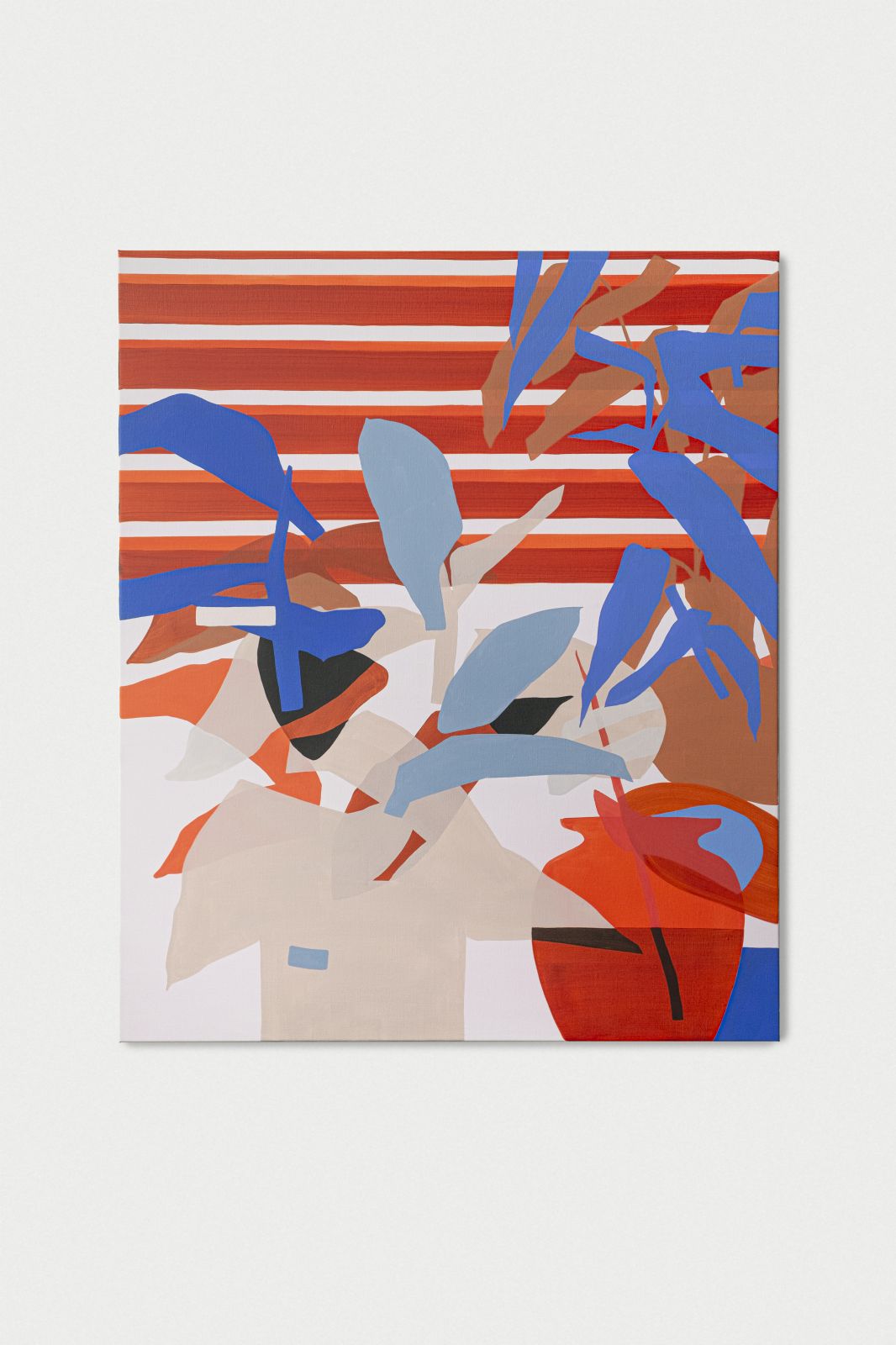
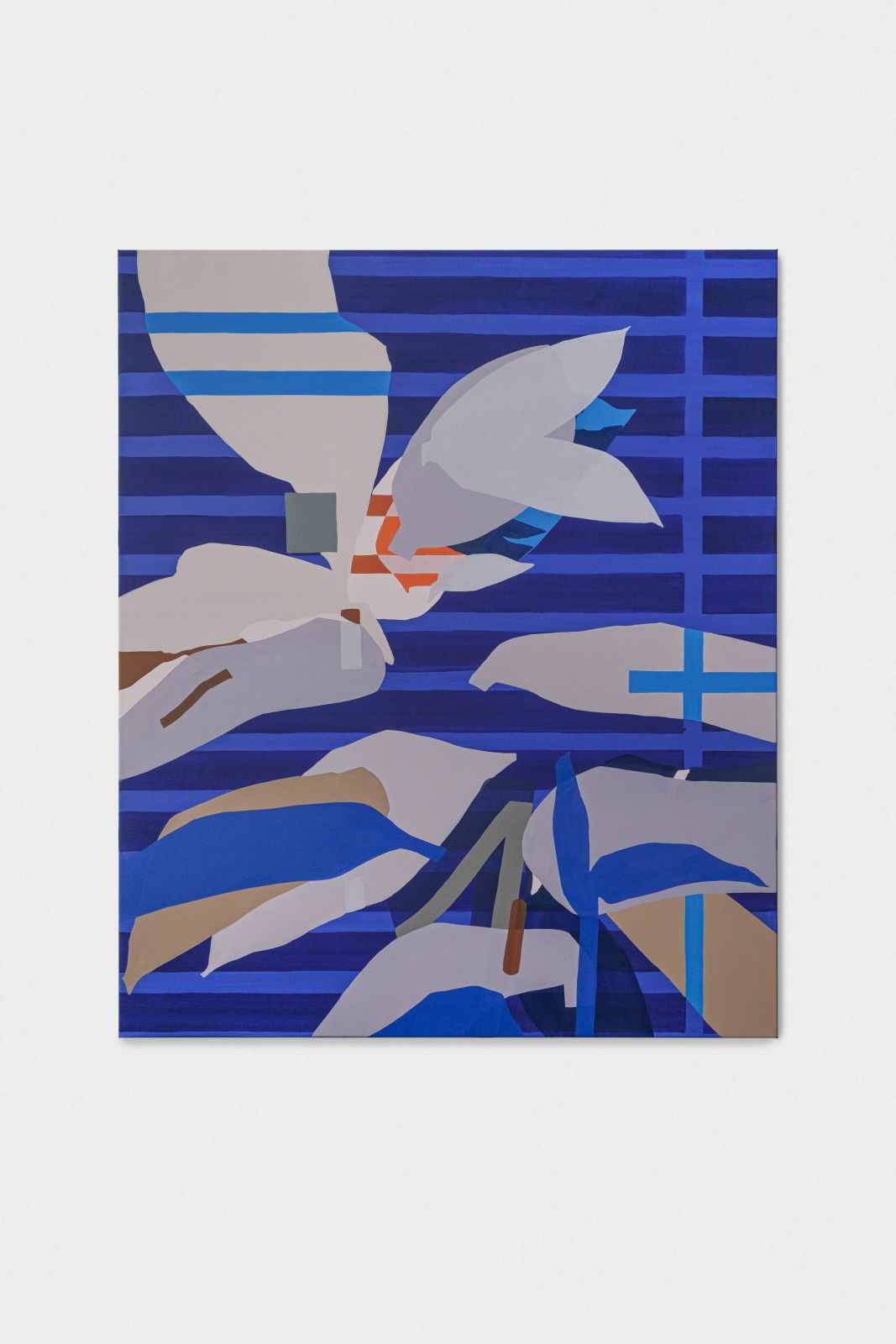
Elaborating on her current art process, Piena shares her experience at Emily Carr University in Vancouver, where she did her exchange semester back in 2017. “I really learnt a lot in Vancouver, especially in Elizabeth McIntosh’ painting class. That’s where I started to paint in layers and use line drawings as a base for my paintings. I learned to continue working on a painting, even if I thought it was no good. We did an exercise called “painting on painting”, I still have the piece. I think there must be about six different paintings layered on top of one another. The idea was to draw a new painting on top of the old one every two weeks. Sometimes if felt good to see your work improve, sometimes it hurt to have to cover a work you were proud of, a real “kill your darlings” moment. It was a great and accessible way to continue learning something new whilst only using a single canvas.”
Piena was one of the artists that contributed to Mini Galerie’s September 2020 exhibition Paradisia, a show that dealt with the intersection of art and nature. I ask her whether art has changed her attitude towards nature.
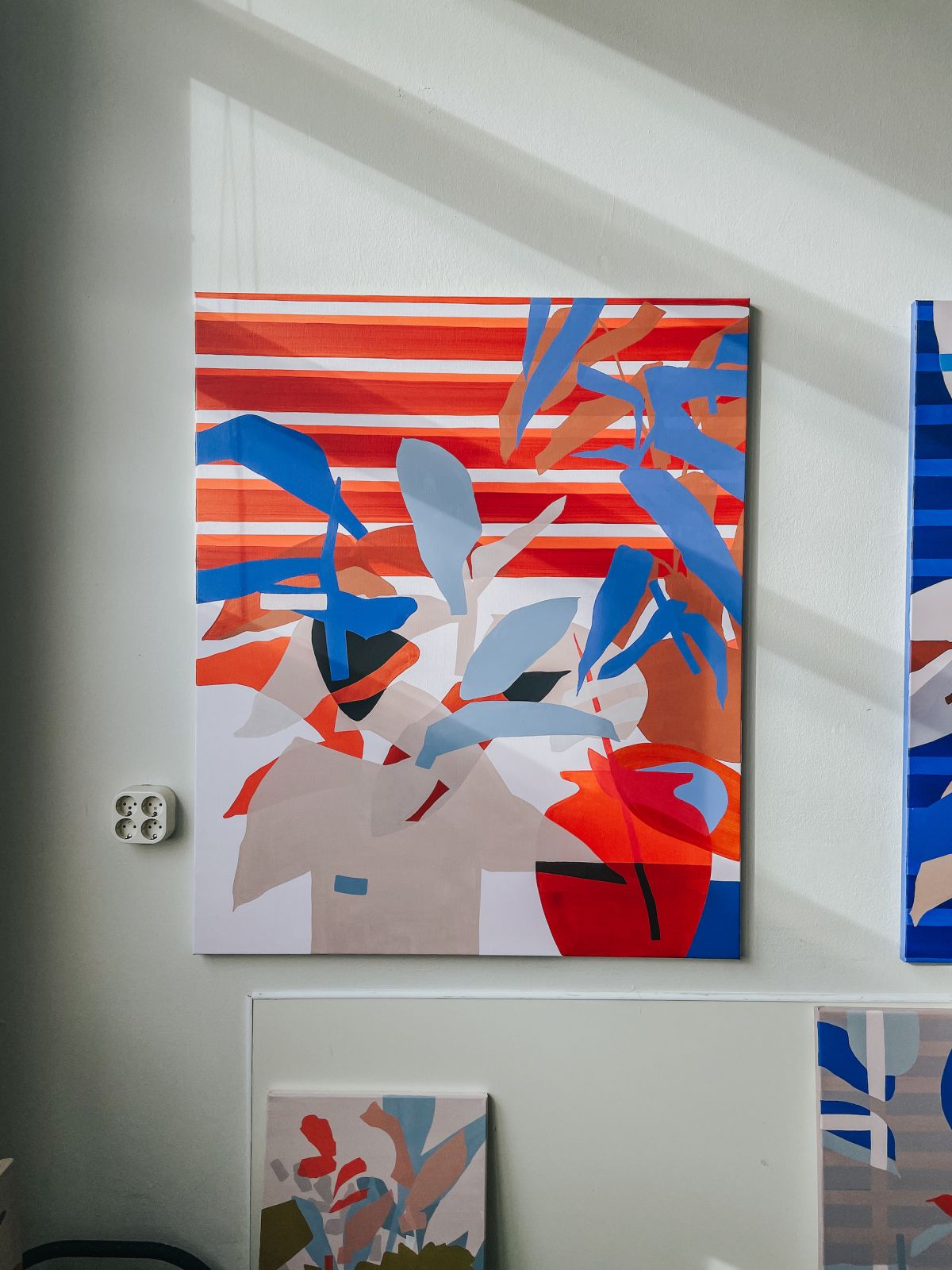
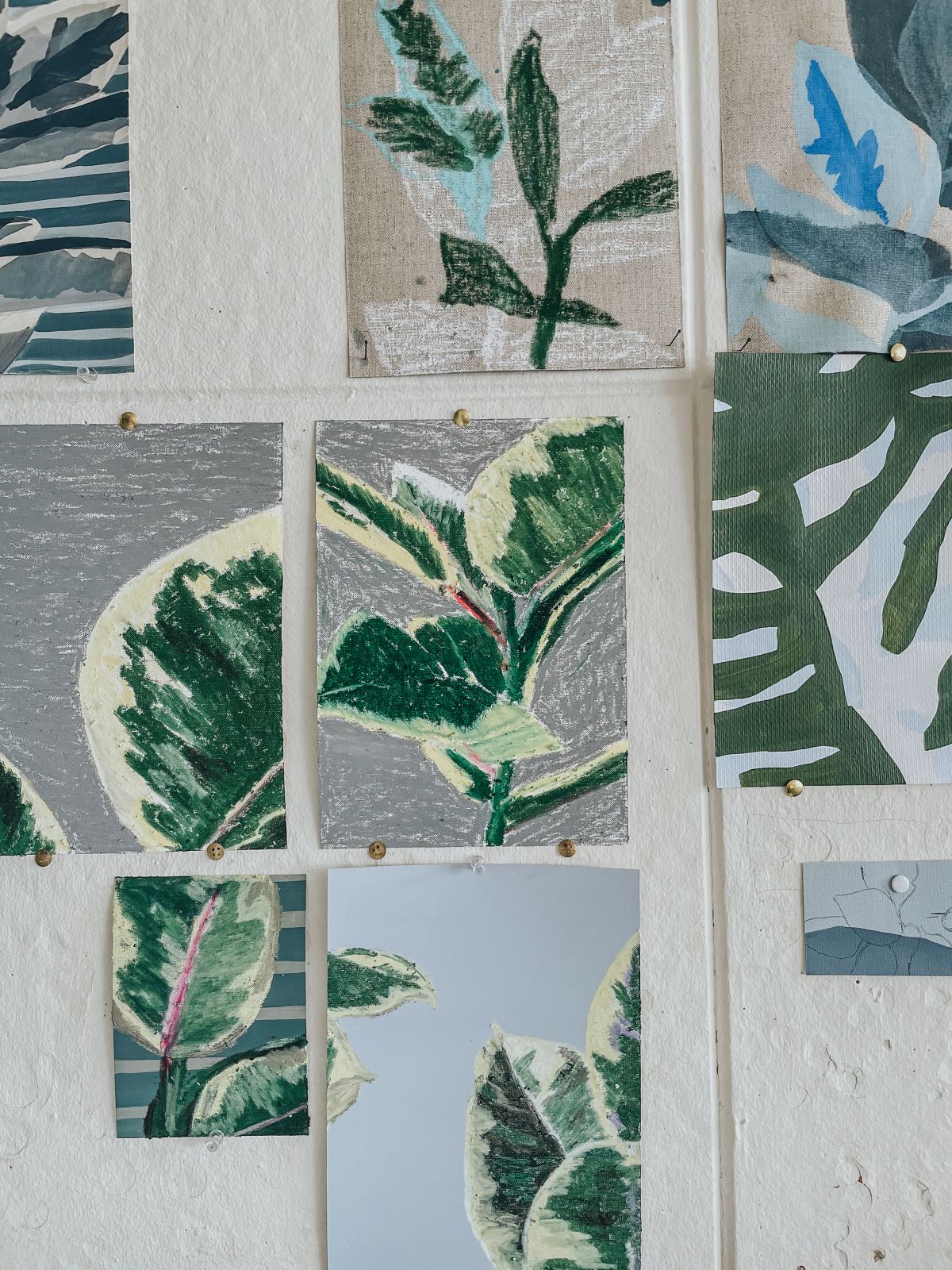
“I think that art teaches you how to see better, and also how to better experience nature. I think that’s how our appreciated for it grows, along with the realization that we have to take care to preserve it. I was sketching in the Rocky Mountains and it occured to me that I probably took more in than had I just stuck to hiking. Sketching forced me to take a longer look at the nature around me. Art has helped me to see nature and its beauty in a way I haven’t yet grown tired of.
I find it fascinating how many types of plants and plant variations there are in the world. I work a lot with house plants, though they probably don’t really count as nature. They’re cultivated and sold to brighten up housed and offices, to bring nature closer. Perhaps this actually highlights nature’s pleasant calming effect on people!
My intention with the house plants was to focus on a little piece of nature. I gain a lot of inspiration from watching them grow, shifting into shapes far beyond my imagination.”

With a solo exhibition coming in nine months time, I ask Liesbeth what her other future plans are, whether she’d like to experiment with new art forms beyond painting.
I’d like to experiment with ceramics, and also weaving.” She talks about the textile lab at Tilburg’s textile museum. “I’ld love to spend some time there and learn how to recreate my paintings into woven material”.
“For now though, I’m pretty happy with painting”.
Text and interview by Alicia Hansen.